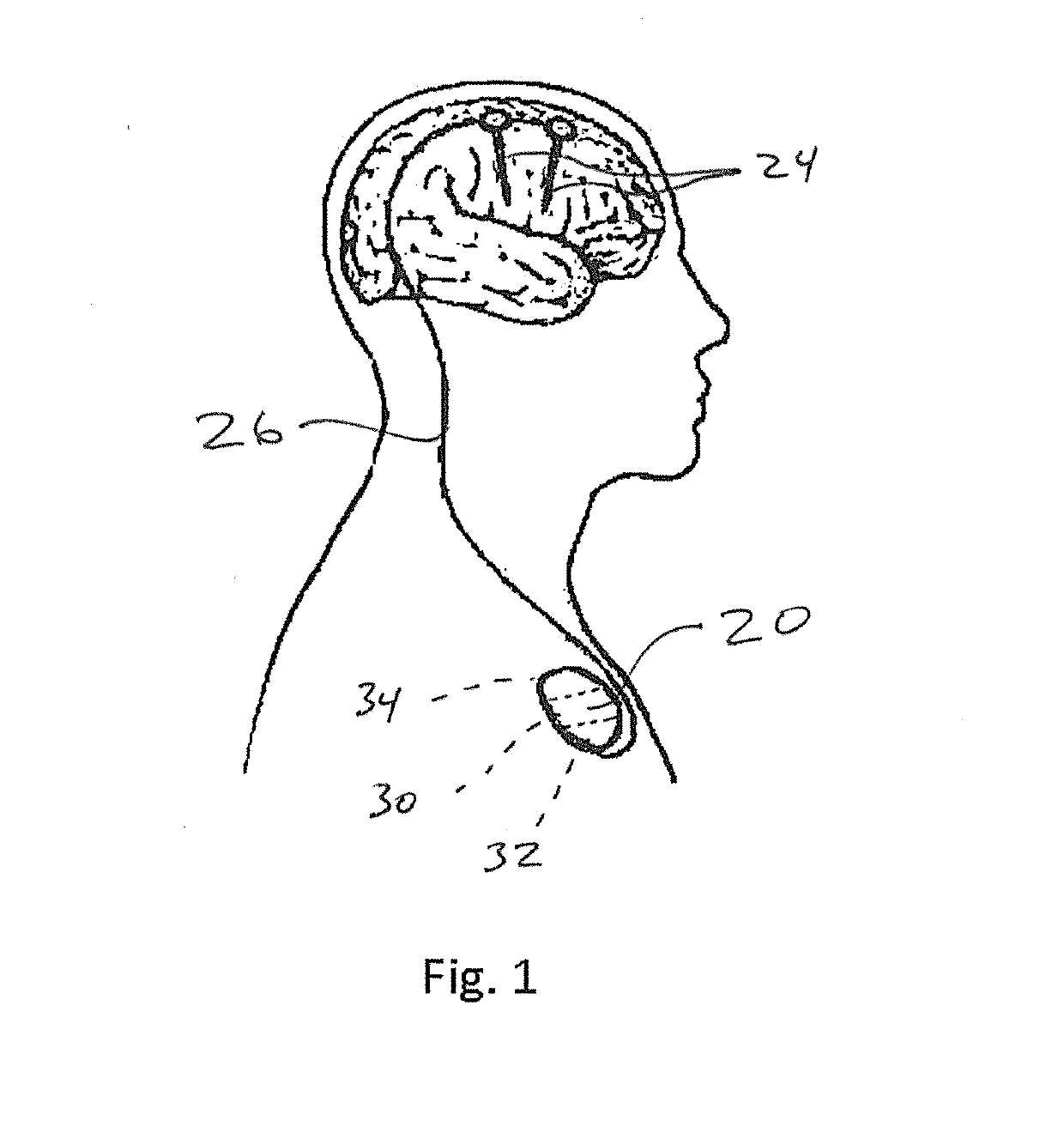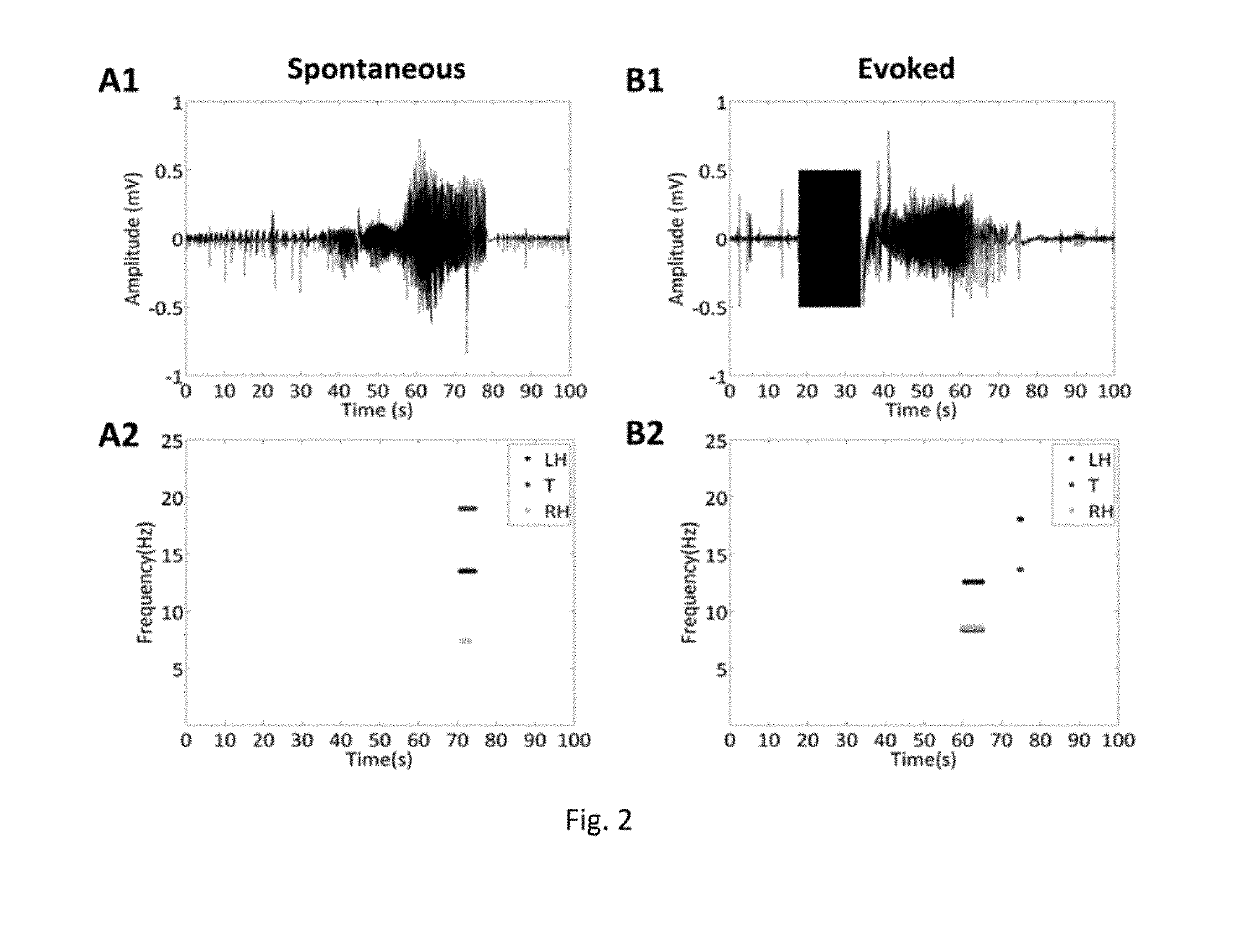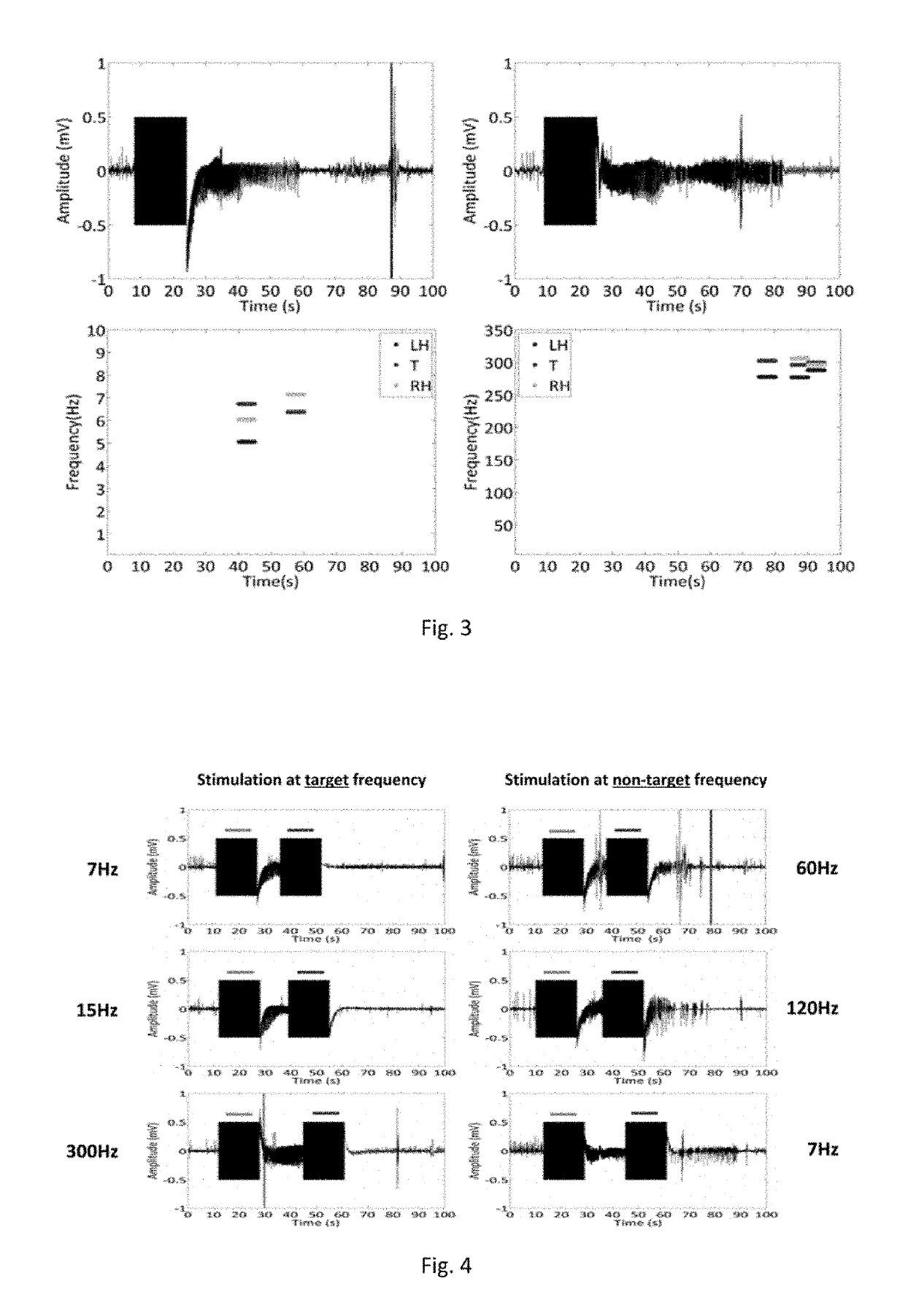Method and apparatus for preventing or terminating epileptic seizures
a technology of epileptic seizures and closed loop stimulation, which is applied in the field of closed loop stimulation protocols for preventing or terminating epileptic seizures, to achieve the effect of stopping a progressing seizure and improving the effect of stimulation at terminating seizures
- Summary
- Abstract
- Description
- Claims
- Application Information
AI Technical Summary
Benefits of technology
Problems solved by technology
Method used
Image
Examples
example i
[0040]Experiments were performed on male Sprague-Dawley rats. Experimental protocols were conducted in accordance with National Institute of Health instructions for the care and use of laboratory animals. The rats had unlimited access to food and water. They were maintained in individual cages with 12-h light / dark cycles, with the light on from 6 AM-6 PM.
Surgery Procedures and Seizure Induction
[0041]Rats were anesthetized with a mixture of Ketamine (80 mg / kg) and Xylazine (10 mg / kg) delivered intra-peritoneally and then fixed within a stereotaxic apparatus (KOPF Model 900, CA, USA). The plane of anesthesia was continually assessed by reaction to a toe-pinch stimulus and corneal eye-blink reflex. Anesthesia was maintained with boosters containing Ketamine (20 mg / kg) delivered intramuscularly. A midline incision was made from the bridge of the nose to the posterior end of the cranium. Stereotaxic targets were calculated using a stereotaxic rat brain atlas. Lambda, Bregma and Sagittal ...
example ii
[0049]Patterns of phase synchrony have been observed between three subcortical nuclei: bilateral hippocampi and the left anteromedial thalamus in the circuit of Papez only during the initiation and termination phases of seizures. This is consistent with other studies that looked at synchronization during experimental animal seizures as well as during termination in human seizures. In this study, multi-site brain dynamics within the circuit of Papez were calculated in a freely-moving chronic rat limbic epilepsy model. Using empirical mode decomposition and coherence analysis, key dynamics were identified as seizures progressed. Synchrony dynamics seen as a seizure naturally terminated were reproduced using exogenous multi-site synchronized stimulation in an effort to stop a progressing seizure. Significantly improved efficacy of the stimulation at terminating seizures was found when the stimulation frequency and location of multi-site synchronized stimulation matched the endogenous s...
example iii
[0071]In this example, an adaptive non-linear analytical methodology was used to extract stimulation frequency and location(s) from endogenous brain dynamics of epilepsy patients, using phase-synchrony and phase-connectivity analysis, as seizures evolve. The method was applied to seizures recorded using depth electrodes implanted in both hippocampus and amygdala in three patients. A reduction in phase-synchrony was observed in all patients around seizure onset. However, phase-synchrony started to gradually increase from mid-ictal and achieved its maximum level at seizure termination. This result suggests that hyper-synchronization of the epileptic network may be a crucial mechanism by which the brain naturally terminates seizure. Stimulation frequency and locations that matched the network phase-synchrony at seizure termination were extracted using phase-connectivity analysis. One patient with temporal lobe epilepsy (TLE) had a stimulation frequency of ˜15 Hz with the stimulation lo...
PUM
 Login to View More
Login to View More Abstract
Description
Claims
Application Information
 Login to View More
Login to View More - R&D
- Intellectual Property
- Life Sciences
- Materials
- Tech Scout
- Unparalleled Data Quality
- Higher Quality Content
- 60% Fewer Hallucinations
Browse by: Latest US Patents, China's latest patents, Technical Efficacy Thesaurus, Application Domain, Technology Topic, Popular Technical Reports.
© 2025 PatSnap. All rights reserved.Legal|Privacy policy|Modern Slavery Act Transparency Statement|Sitemap|About US| Contact US: help@patsnap.com



